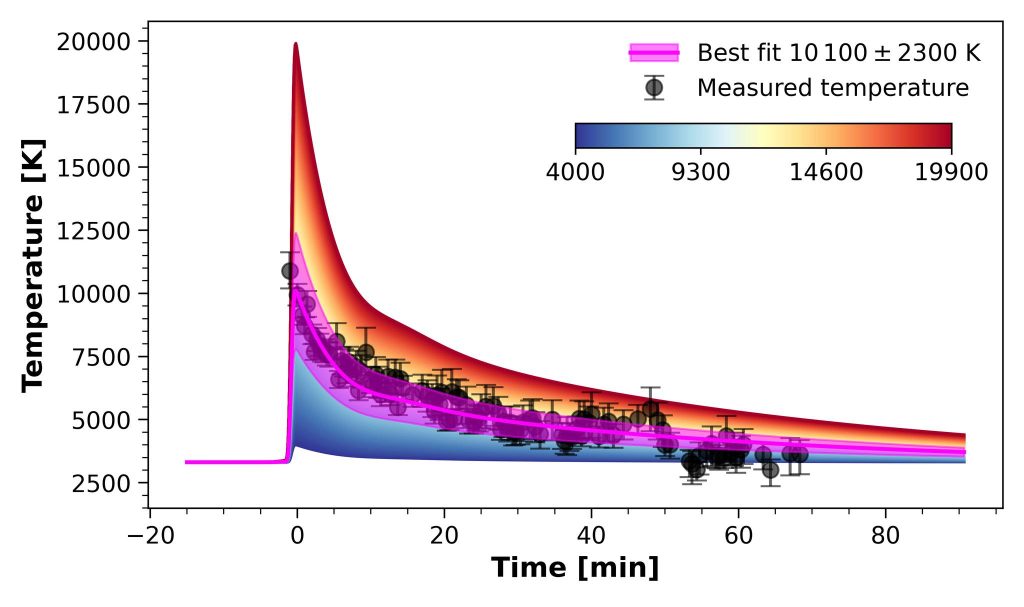Stellar hot spots: what the flares tell us about their temperature and size?

In the new paper, soon to be published in the journal Astronomy & Astrophysics, scientists from the Institute of Astronomy UWr, Centre of Scientific Excellence – Solar and Stellar Activity, and research facilities in the Czech Republic and Bulgaria looked at the thermal evolution of several flares registered at the astronomical observatory in Białków and the Belgian observatory Shumen.
This was possible by making observations in several bands of visible light. It is worth noting that such observations occur rarely. As they are quite demanding due to the short duration of most flares. It is in clear opposition to the mass, very precise observations of solar flares obtained thanks to the Kepler and TESS missions. TThese observations, however, are made only in one radiation band, making it impossible to determine temperature changes during the phenomenon.
In the approach commonly adopted to date, the energy released during a flare was estimated by assuming that the temperature during the flare does not change significantly, and that changes in its brightness are primarily due to changes in its surface. We were able to show that it is the changes in the temperature of the flare that correctly define its total energy, while the changes in surface area are of little significance.
An essential element of this work is also the proposal how to improve the analysis of mass observations from the TESS mission. We suggested the possibility of estimating the maximum temperature of the observed flare knowing only its amplitude and the spectral type of the star on which it occurred. It would allow us to significantly improve our understanding of those phenomena. To see if this approach is fully justified, we will need a significant increase in the number of flare observations in several bands of visible light.
